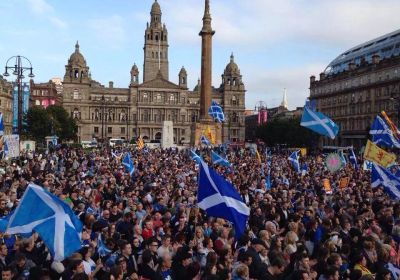-
-

Britain's May 7 elections revealed the deep divides emerging in British society and offered the promise of a constitutional crisis and social struggles to come. Most commentators had expected the result to be a hung parliament; polls had consistently shown the Conservative (Tory) and Labour parties to be neck and neck. In Scotland, the polls pointed to a wipe-out of the previously dominant Labour Party, with the Scottish National Party (SNP) poised to make sweeping gains on a platform of opposing austerity and Trident nuclear weapons.
-
 Britain's May 7 general election is set to be the closest in living memory. In the polls, the two leading parties, Labour and the Conservatives (Tories), are within points of each other. The polls have not shifted despite the best efforts of Tory Prime Minister David Cameron and Labour leader Ed Miliband to secure a breakthrough. Why are the polls so close?
Britain's May 7 general election is set to be the closest in living memory. In the polls, the two leading parties, Labour and the Conservatives (Tories), are within points of each other. The polls have not shifted despite the best efforts of Tory Prime Minister David Cameron and Labour leader Ed Miliband to secure a breakthrough. Why are the polls so close? -
 As Scots gathered together at Christmas and Hogmanay last year, conversations inevitably turned to politics. Most were agreed that the year ahead would be an interesting one. The impact of the independence referendum on September 18 last year, won by the “No” vote, is still being felt throughout Scottish society. Its impact is reverberating across the British state as well.
As Scots gathered together at Christmas and Hogmanay last year, conversations inevitably turned to politics. Most were agreed that the year ahead would be an interesting one. The impact of the independence referendum on September 18 last year, won by the “No” vote, is still being felt throughout Scottish society. Its impact is reverberating across the British state as well. -
 After two years of campaigning, Scotland’s independence referendum has ended. It saw victory for the No side, the opponents of independence with 55% backing compared to 45% who backed a Yes to independence. The referendum saw an unprecedented level of engagement and debate throughout Scotland. This was reflected in the huge and unprecedented turnout of 84.59%, reversing the trend of recent decades of dwindling poll turnouts. Some rural areas even recorded 100% turnout.
After two years of campaigning, Scotland’s independence referendum has ended. It saw victory for the No side, the opponents of independence with 55% backing compared to 45% who backed a Yes to independence. The referendum saw an unprecedented level of engagement and debate throughout Scotland. This was reflected in the huge and unprecedented turnout of 84.59%, reversing the trend of recent decades of dwindling poll turnouts. Some rural areas even recorded 100% turnout.
Alister Black
Alister Black
